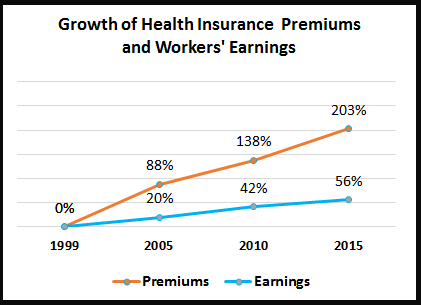Analysis Reveals Better Care Options, Less Cost
In the past six years, health premiums have increased by 203%, reported a recent Kaiser Family Foundation study.[1]But workers’ earnings grew an average 56% during that period. How can employers better manage health care dollars?
The surge of sophisticated technology for big data analysis gives providers and employers unprecedented opportunities to target potentially unnecessary costs, while better caring for covered members.
Consider this example: Jane,* a 42-year old female member with moderately-controlled diabetes, has health benefits through her job. Jane’s biannual visit to her Primary Care Physician (PCP) documents her routine lab work, prescriptions and referrals for preventive screenings.
Between PCP visits, this diabetic member gets the flu, causing severe increases in blood glucose levels. When Jane goes to the Emergency Room, the ER doctor increases her medication dosage. After she goes home, Jane’s personal blood glucose meter shows an alarming drop in her blood sugar levels. Jane calls her PCP, who adjusts her dosage to prevent more complications. Jane’s next checkup is planned in six months.
Was all the data communicated from the hospital’s electronic records, the lab vendor’s system, payer claims and her home monitoring glucose meter? Will the PCP be able to verify that Jane actually obtained her preventive mammogram or flu vaccine prescribed before the ER visit?
At MedCost, Jane’s case would be carefully monitored by her nurse health coach. If there is an issue, her nurse health coach would follow up.
Big data equips providers to accurately analyze key metrics to do more than explain past diagnoses and trends in a group of employees. Advanced analytics can now identify patients and populations at risk for developing certain conditions prior to the actual onset of illness.
It is possible for employers to save on health expenses. Harness the power of accurate data analysis to preserve medical costs, while benefiting your employees’ health.
*Actual patient data not used.
[1]Journal of American Medical Association, 2016; 315(1);18, doi:10.1001/jama.2015.17349, http://bit.ly/1TSOFho (accessed Feb. 15, 2016)

(Source: Kaiser Family Foundation)




Add new comment